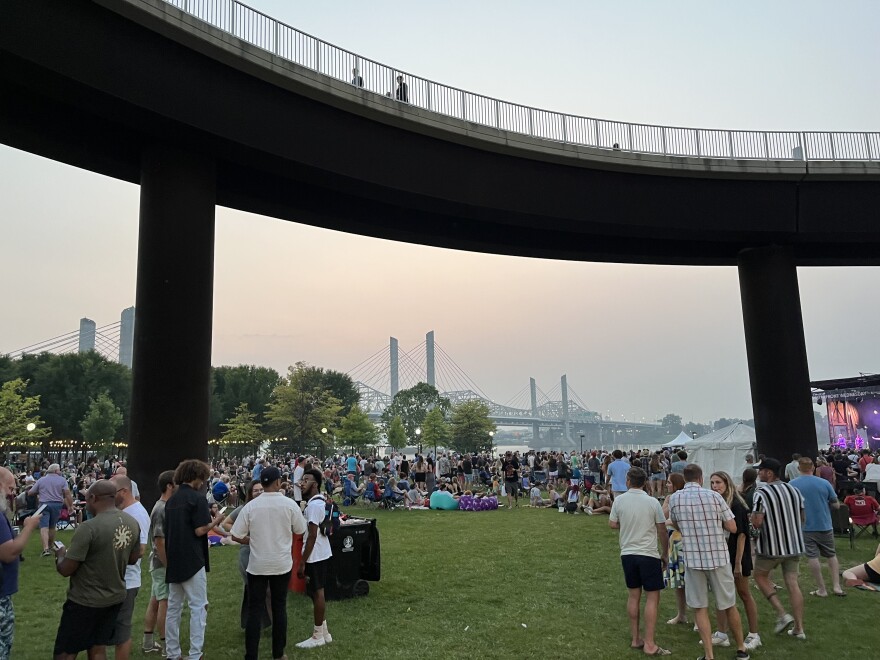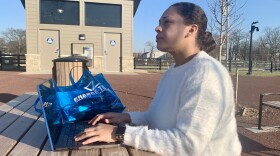Ground-level ozone is one of the country’s most heavily regulated pollutants, and one that’s been particularly troublesome for Louisville. The city and surrounding counties have mostly failed to meet federal standards for ozone over the last 20 years.
The American Lung Association has documented that ozone pollution shortens people’s lives and increases a variety of health risks, particularly for people with asthma and other respiratory diseases
Louisville has some of the highest rates of asthma in the country. Last year, the city ranked fifth in the country for the highest rate of emergency department visits for asthma.
“Louisville has a troubled history with ozone,” said Ted Smith, University of Louisville associate professor of environmental medicine. “We used to have vehicle emissions inspections, and those are gone now, but they were there for a reason and it’s because we’ve really struggled to maintain healthy air quality in this city.”
But the city has seen improvements in air quality over the long term. And in June, Louisville’s Air Pollution Control District (APCD) sent a detailed proposal asking the U.S. Environmental Protection Agency to reclassify the region as meeting the health standard for ozone pollution.

If the EPA were to agree, Louisville could get rid of the more-expensive reformulated gas the city uses to reduce ozone. It would also change how new factories calculate their emissions. A new automotive plant, for example, would no longer have to offset emissions to build, they just have to prove they’re using the best available technology.
But there are challengers to the idea that Louisville has achieved a permanent reduction in ozone emissions. Environmental advocates at the Sierra Club wrote a letter to the EPA opposing the redesignation for not showing a consistent, and reliable level below the ozone standard.
“Ultimately what that will lead to is more negative health outcomes for people in Louisville,” Staff Attorney Kate Huddleston said. “That's a burden that will be disproportionately borne by Black residents of Louisville as we’ve seen historically.”
A pandemic downturn?
Ground-level ozone forms when certain pollutants combine in the presence of sunlight on hot, dry days. Cars, power plants and bourbon-aging warehouses are among the largest sources of the chemicals that combine to form ozone in and around Louisville.
When you look at the last 20 years, ozone pollution in the region is trending down. But as the world learns more about the ill-effects of air pollution, the EPA’s pollution standards have gotten more strict.
Right now, the EPA’s standard allows up to 70 parts per billion of ozone. That’s a level they say protects public health, with an adequate margin of safety, including the health of at-risk populations.
Louisville’s APCD used data from 2019 to 2021 to prove to the EPA the region’s air quality is meeting that ozone standard. The region eked in at 69 parts per billion ozone, 1 ppb shy of the maximum.

That time period coincided with the worst of the COVID-19 pandemic when industry slowed and people across the country were working and going to school at home and generally driving less.
Huddleston argues Louisville hasn’t been in ozone compliance since. The next set of data for 2020 to 2022 was slightly over the EPA’s 70 ppb threshold, but EPA rules allowed Louisville regulators to round down.
“We know that’s not the case in ordinary mathematical convention,” Huddleston said. “So that is not, in fact, below the threshold.”
This summer, Louisville also saw higher than average levels of ozone.
“We have seen an uptick in ozone formation this summer, some of which has been driven by the Canadian wildfires that have blanketed the eastern part of the country,” Louisville Air Pollution Control District Director Rachael Hamilton said.
Ozone effects
Hamilton said APCD data shows the pandemic only minimally disrupted the traffic and industry that contributes to ozone formation. She stands by their decision to re-classify the area, which could change the city’s reformulated gas requirements, and pollution standards for heavy industry. Officials with the EPA haven't said when they could make a decision.
In the meantime, it’s likely that ozone pollution will trend downward as major contributors decline. Louisville Gas & Electric and Kentucky Utilities, for example, have plans to shut down multiple coal-fired generating units in the coming years. Those plants contribute excess amounts of nitrogen oxides, which contribute to ozone pollution.
“There has been a downward trend in ozone formation, and we believe that not just because of the planning that we have already done, but also because of the future reductions in those precursors [that contribute to ozone formation] that downward trend will continue,” Hamilton said.

But Smith, the U of L professor of environmental medicine, said that’s missing the point. It’s clear that Louisville is on the cusp of meeting the standard, but a return to “business as usual” would have disproportionate impacts on vulnerable populations: older adults, children and Louisville’s Black community.
Smith said while ozone affects all of us, Black residents in Louisville face a significantly higher burden of asthma.
More than 7,000 people in Jefferson County visited a doctor or hospital for asthma complaints in 2021 -- 58% of which were Black residents. Louisville’s 2017 Health Equity report similarly showed that asthma-related hospital admissions were primarily Black children.
These negative health outcomes are the result of myriad systemic issues from housing, to neighborhood development based on racist practices like redlining, to environmental inequality, like the fact that predominantly Black West End neighborhoods are closest to the city’s industrial zone.
“There’s no other way to say it: this is air pollution, we’ve contaminated air,” Smith said. “We’ve done it with water, we’ve done it with land and we often justify it by saying ‘Well there’s a certain amount of lives that are worth economic prosperity.’”
When it comes to health equity, problems like poverty and food deserts can feel intractable, Smith said. But air pollution is one area where the government can really make a difference.
Correction: This story has been updated to reflect the accurate unit of measurement for ozone.







